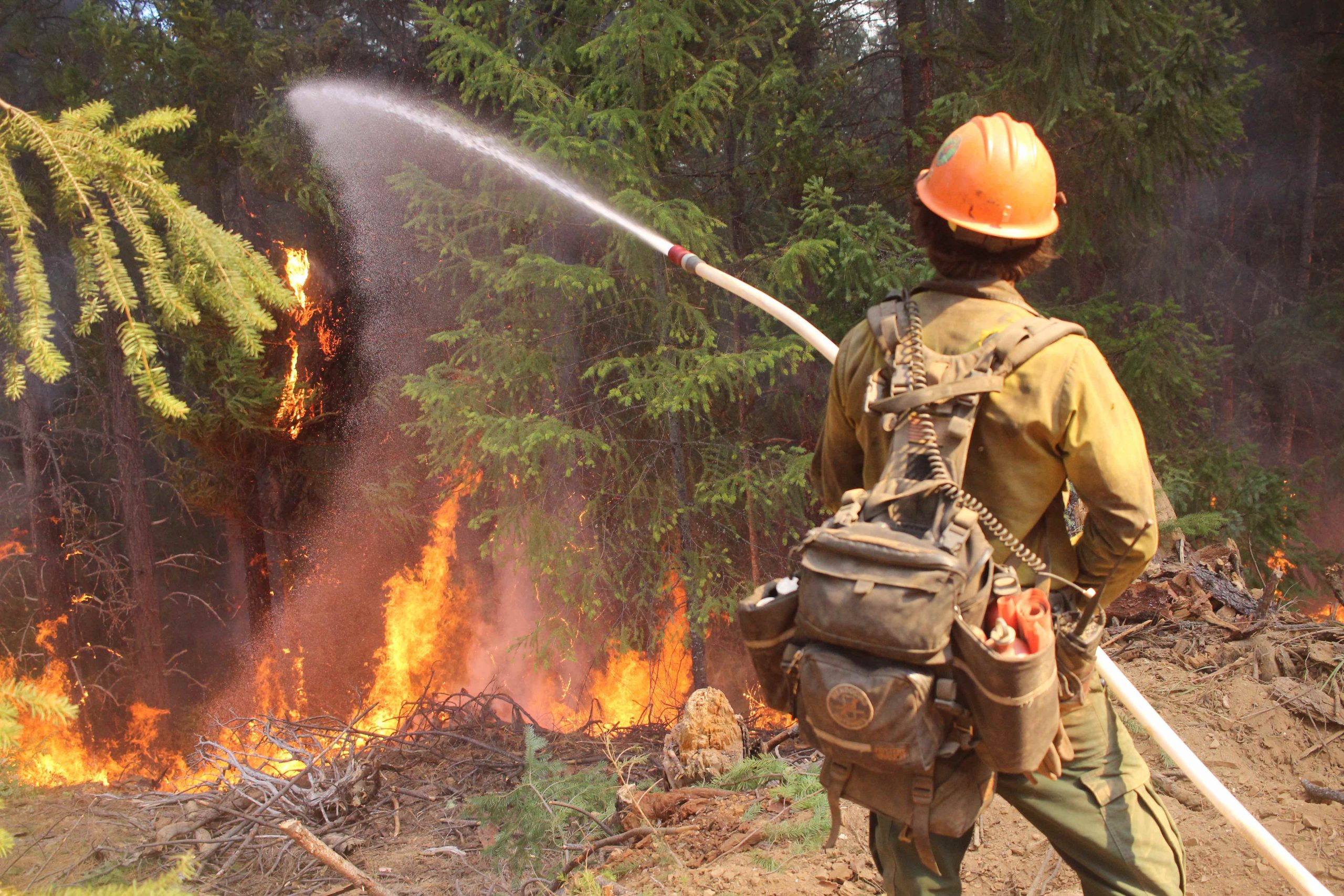The True Cost of Catastrophic Wildfire
Successful forest restoration meets multiple objectives, with an overarching objective to increase forests’ resiliency to catastrophic wildlife. A resilient forest is one that is robust and adaptable to stress or disturbance, such as wildfires, pests, diseases and more.
“Resilient forests will still burn on these landscapes,” explained Krista Modlin, NWTF Pacific Coast district biologist. “But, the added benefit of resilient forests, is that when they burn, they burn less severely and at a more manageable rate.”
Building forest resilience requires a collaborative approach that involves stakeholders from multiple sectors, including government agencies, conservation groups, and local communities. The collaborative effort on the 20-year national master stewardship agreement enables groups such as the NWTF and the USDA Forest Service to develop strategies that balance the needs of different stakeholders and help ensure the long-term health and resilience of our forests.
The Forest Service and the NWTF are working together to help solve the wildfire crisis affecting many states in the western United States. Under the master stewardship agreement, the Forest Service and the NWTF have commenced a pilot project in the Pacific Southwest Region (Region 5) of the Forest Service, with the goal of building forest resiliency and reducing the risk and intensity of wildfires in the Klamath National Forest located in northern California. This outcome will be a vital indicator of the success of the project.
Reducing wildfire risk and intensity will be instrumental in preventing devastating wildfires like the 2022 McKinney Fire. This fire claimed four lives and consumed over 50,000 acres in under 36 hours. The aftermath of high-intensity wildfires often results in significant ecological damage to large areas of the forest, leaving behind burn scars that can last for generations. Subsequent flooding events and debris flows exacerbate the ecological devastation caused by these fires.
“High-intensity wildfires are expensive to fight and they jeopardize the lives of firefighters trying to save our forests and communities,” said Modlin, whose husband Ben, is a Forest Service Engine Captain.
While firefighting efforts are essential, they often come at an enormous cost in terms of human life, safety, finances and the environment. The expenses incurred in battling two colossal wildfires in California in 2021 were staggering. The Beckwourth Fire Complex burned 106,000 acres of Plumas National Forest between July and September, and the associated firefighting expenses were approximately $543 million. Meanwhile, the Dixie Fire in Northern California burned 963,000 acres from mid-July to late October and required an estimated $637 million to combat, earning the title of California's second-largest wildfire.
The true cost of catastrophic wildfires extends beyond the immediate expenses accrued through firefighting teams and equipment. The true cost encompasses the long-term economic, social, and environmental impacts of the disaster. The damage caused by wildfires can be devastating, including loss of life, property damage, displacement of people, and disruptions to infrastructure and services. Moreover, the ecological impacts can be severe, leading to the loss of wildlife habitat, water quality degradation, soil erosion, and reduced biodiversity. In addition, the economic consequences can be significant, including lost revenues from tourism, reduced timber production, and decreased property values. These impacts can persist for years and can have profound effects on individuals, communities, and ecosystems.
“Forest restoration is a bargain when you consider the broader, longer-term costs of wildfires,” said Modlin. “To make informed decisions on management strategies, we need to consider the true costs.”
Heightened wildfire activity and intensity over the last decade has forced the Forest Service to allocate larger portions of its budget towards wildfire suppression costs. This trend has severely constrained the agency's ability to carry out crucial land management functions, such as forest restoration projects that reduce the wildfire threat.
Mitigation investments, such as the removal of hazardous fuels, controlled burns and fire-safe land planning are efforts that will pay off in the long-term. Investing $50 million on forest restoration to significantly reduce the incidence of wildfires, is a more beneficial approach than spending about ten times that amount suppressing a single fire.
This underscores the significance of the NTWF's efforts under the master stewardship agreement to increase forests’ resiliency, concurrently addressing the economic and environmental consequences of wildfires. By supporting the wildfire crisis strategy, we can work towards resolving the ongoing challenges faced by our forests and communities.
To learn more about these critical conservation priorities, explore the Forest Service’s Wildfire Crisis Strategy and the NWTF’s Four Shared Values.
